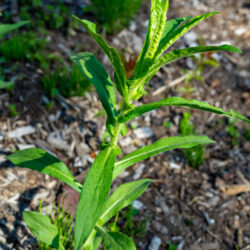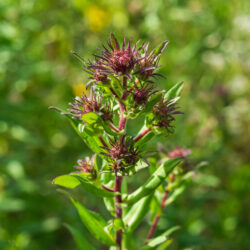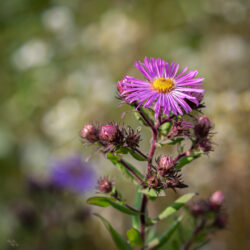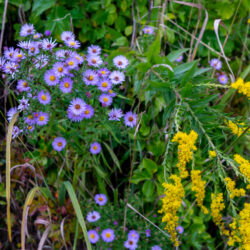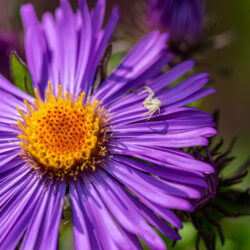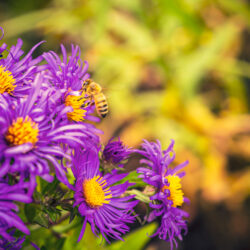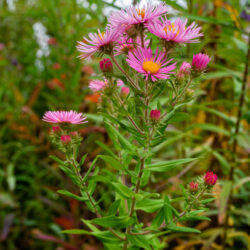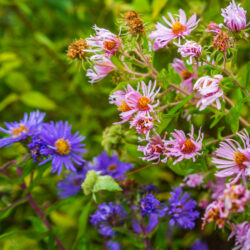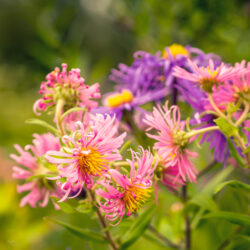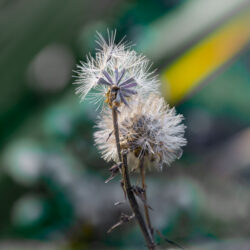Etymology
Symphyotrichum is from the Greek symph, (coming together) and trich (hair); novae-angliae is Latin for New England.
Native Habitat
Moist prairies, meadows, thickets, low valleys and stream banks
Garden Uses
New England asters provide color and contrast to the fall perennial border. Plant in groups or in mass to enhance the front of your border. Plants can loose their lower leaves, so plant something with attractive foliage in front of it. This plant is also great when used in naturalized drifts in meadows or wildflower gardens. Pinching back stems several times before mid-July will keep your plants at a manageable height, encourage bushiness, and may eliminate the need for staking. Note that this technique will also postpone flowering.
Overview
The New England aster is a native perennial that occurs in moist prairies, meadows, thickets, low valleys and stream banks. It is a stout, leafy plant typically growing 3' to 6' tall with a robust, upright habit. It blooms profusely from late summer to early fall.
Leaves and Stems
The leaves are mostly lance-oblong, widest above the middle, 1" to 4" long, ½" to 1" wide, mostly toothless, stalkless, and taper to a pointed or rounded tip. The upper surface is rough; the underside is more softly hairy. The stems are single or multiple from the base, mostly erect, stout, brown to reddish, and covered in short, spreading hairs
Flowers
The flowers are 1" to 1½" across with 40 to 100 narrow petals (ray flowers) and a golden yellow center that turns reddish purple with age. Ray color is purple to rose pink.
Fruit/Seed
The fruit is a dry, hairy seed with a tuft of light brown hairs to carry it off in the wind.
Wildlife Associates
The New England aster is an important late-season food source for pollinators. Its flowers are visited by a variety of pollinating insects such as bee flies, bumble bees, miner bees and leaf-cutter bees. Butterfly caterpillars, moth caterpillars and many types of plant and lace bugs feed on its leaves and stems. Its seeds are eaten by birds.
Propagation
Mature plants (3 years or older) can be divided in the spring. The seed heads remain intact for several weeks after the first frost. At that time, shake the seeds loose or pluck them from the head. The most convenient method to grow these seeds is to surface-sow them in a pot from late fall to early winter. Once the seeds are sown, set the pot in a safe outdoor location protected from mice. If you plant the seeds after December, provide an artificial chilling period of approximately two months by storing the seeds in sealed, refrigerated containers.
Garden Location
Residential Garden (see garden map)
Sources
Lady Bird Johnson Wildflower Center
USDA Natural Resources Conservation Service
Plant Profile by Kathy Kling

